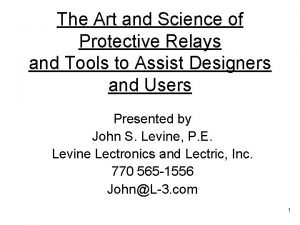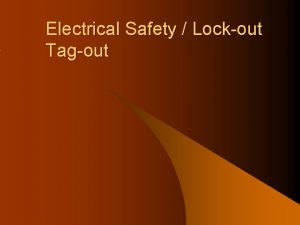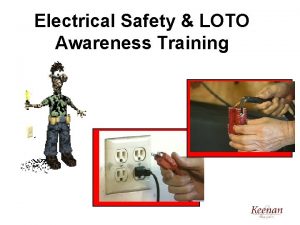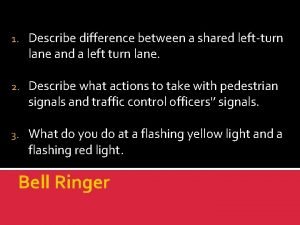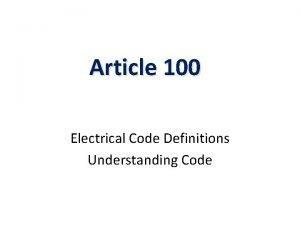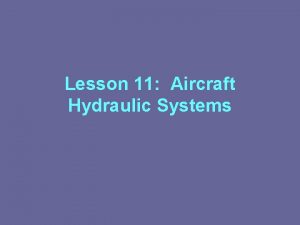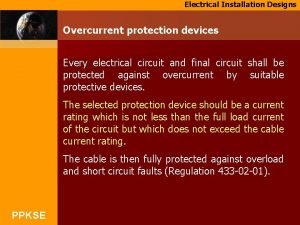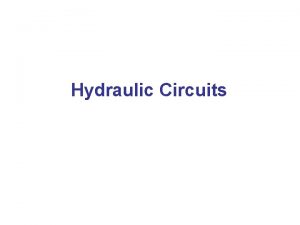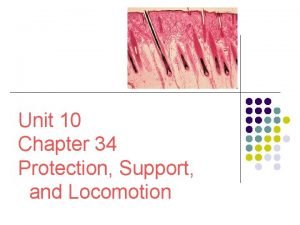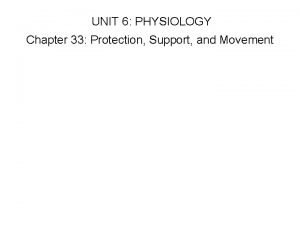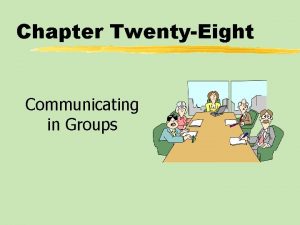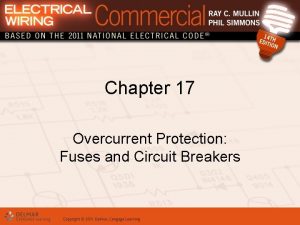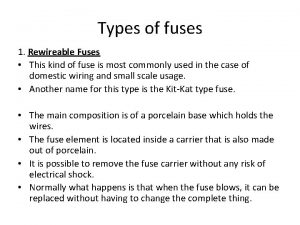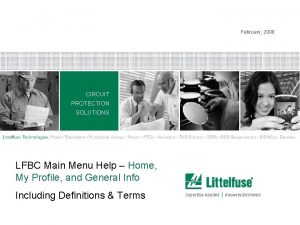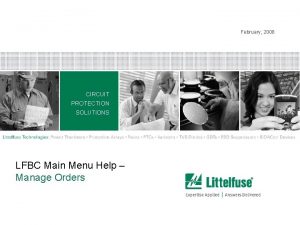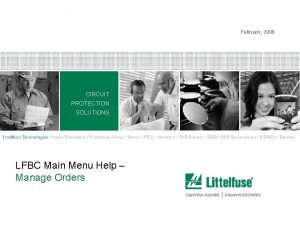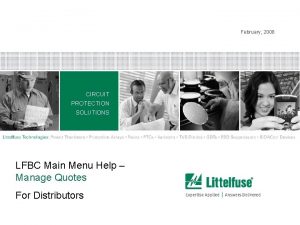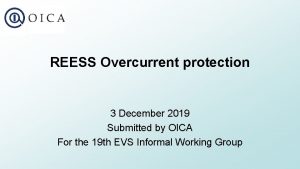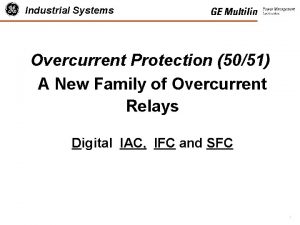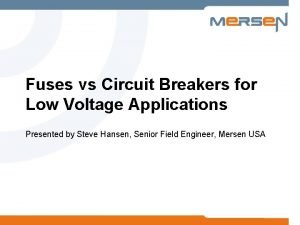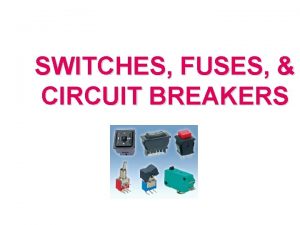Chapter Twenty Eight Overcurrent Protection Fuses and Circuit



























- Slides: 27

Chapter Twenty Eight Overcurrent Protection— Fuses and Circuit Breakers

Objectives • After studying this chapter, you should be able to: – Understand the important NEC® requirements for fuses and circuit breakers – Discuss the five possible circuit conditions – Understand the various types and operation of fuses and circuit breakers

Objectives (cont’d. ) – Know when to use single-pole and 2 -pole circuit breakers – Understand the term interrupting rating for fuses and circuit breakers – Calculate available short-circuit current using a simple formula – Understand series-rated panelboards – Understand the meaning of selective coordination and nonselective coordination

The Basics • Overcurrent protection – Covered in NEC® Article 240 – For residential services, branch circuits, and feeders is provided by circuit breakers or fuses • Fuses and circuit breakers are sized by matching ampere ratings to conductor ampacities and connected load currents

® NEC Key Requirements for Overcurrent Protection • Some key NEC® references are: – NEC® Table 210. 24, NEC® 240. 4, 240. 4(B), 240. 4(D) – NEC® 240. 20(A), NEC® 240. 21, NEC® 240. 22 – NEC® 240. 24(A), 240. 24(D), 240. 24(E), 240. 24(F) – NEC® 230. 70(A)(2), 230. 79(C), 230. 90(A), 230. 91

Five Circuit Conditions • Normal: when the current flowing is within the capability of the circuit and/or the connected equipment • Overload: a condition where the current flowing is more than the circuit and/or connected equipment is designed to safely carry

Five Circuit Conditions (cont’d. ) • Short circuit: a condition when two or more normally insulated circuit conductors come in contact with one another, resulting in a current flow that bypasses the connected load • Ground fault: a condition when a “hot” or ungrounded conductor comes in contact with a grounded surface

Five Circuit Conditions (cont’d. ) • Open circuit: a condition where the circuit is not closed somewhere in the circuit

FIGURE 28 -1 A normally loaded circuit. © Cengage Learning 2015

FIGURE 28 -2 An overloaded circuit. © Cengage Learning 2015

FIGURE 28 -3 Note that the connected load is short-circuited. © Cengage Learning 2015

FIGURE 28 -4 The insulation on the “hot” conductor has come in contact with the metal conduit. This is termed a “ground fault”. © Cengage Learning 2015

FIGURE 28 -5 The circuit is “open” where marked “X. ” No current flows in the circuit so no heat is created. © Cengage Learning 2015

Fuses • Plug fuses are: – Limited to circuits that do not exceed 125 volts – Used in circuits having a grounded neutral where no conductor operates at over 150 volts to ground – Rated between 0 and 30 amperes

Fuses (cont’d. ) • All new plug fuse installations are required to be Type S fuses, 240. 52 • Classified at 0 through 15 amperes, 16 through 20 amperes, and 21 through 30 amperes • In the 0 - to 15 -ampere range, there are many ampere ratings to choose from – Excellent for protecting motors

Fuses (cont’d. ) • Time-current: how long it takes a fuse or circuit breaker to open under different current values • Three types of plug fuses: – Non time-delay (W) – Time-delay, loaded link (TL) – time-delay, dual element (T)

Fuses (cont’d. ) • Cartridge fuses are available with the three basic types of time-current characteristics – Most common is the dual-element cartridge fuse, available in 250 and 600 volt ratings with ampere ratings from 0 to 600 – Class H and Class R types • Other classes of fuses: CC, G, and T

Circuit Breakers • Installations in dwellings normally use thermal-magnetic circuit breakers • NEC® 240. 80 through 240. 86 give the requirements for circuit breakers • Thermal-magnetic circuit breakers are temperature sensitive • The NEC® permits 100 percent continuous loading on an overcurrent device only if it is listed for that

Circuit Breakers (cont’d. ) • Single-pole breakers are used on 120 -volt circuits; they control one hot wire • Two-pole breakers are used on 240 -volt circuits; they control two hot wires on different phases • A two-pole breaker may be used on a dedicated split-wired receptacle such as the disposer/dishwasher receptacles

Circuit Breakers (cont’d. ) • Handle ties connect two adjacent singlepole breakers together, thus permitting both breakers to be switched on or off simultaneously • Handle ties must be tested and listed for use on a specific manufacturers circuit breaker

Interrupting Ratings for Fuses and Circuit Breakers • This rating indicates the maximum current that a device can safely de-energize; NEC® 110. 9 • Panelboards are available in two types – Fully rated – Series rated • Series-rated systems are less costly

FIGURE 28 -11 A fully rated system using main fuses and branch-circuit fuses. The entire assembly (fuses and panelboard) is tested, listed, and marketed with a maximum short-circuit rating. Look for the marking on the panelboard. This type of combination can be found in commercial and industrial facilities. © Cengage Learning 2015

FIGURE 28 -12 A series-rated system using main fuses and branch-circuit breakers. The entire assembly (main fuses, branch-circuit breakers, and panelboard) is tested, listed, and marked with a maximum short-circuit rating. Look for the marking on the panelboard. The lower interrupting rating of the branch-circuit breakers is acceptable because the combination has been tested and listed as a series-rated system. This type of combination can be found in light commercial installations such as multimetering service equipment. © Cengage Learning 2015

Short-Circuit Currents • The ratings required to determine the maximum available short-circuit current delivered by a transformer are: – The k. VA – Impedance values of the transformer • Transformers used in modern electrical installations are efficient and have very low impedance values

How to Calculate Short-Circuit Current • Short-circuit current is also referred to as fault current • Please refer to the text for an example of fault-current calculations using a simple formula

Panelboards. . . What Are They? • Panel, panelboard, and load center mean more or less the same thing – Panelboard is used by NEC® and the UL Standards – Load center • Is not used by either NEC® or the UL Standards • Is a panelboard with less gutter space as well as less depth and width

Panelboards. . . What Are They? (cont’d. ) • Under overload, short circuit, or groundfault conditions – Selective coordination: only the overcurrent device nearest the fault opens – Nonselective coordination: the branch breaker or fuses might open, the main breaker or fuses might open, or both might open
 The art and science of protective relaying
The art and science of protective relaying Fuses and circuit breakers are intended primarily for the
Fuses and circuit breakers are intended primarily for the Fuses and circuit breakers are intended primarily for the
Fuses and circuit breakers are intended primarily for the Twenty past two
Twenty past two It's twenty-five to three
It's twenty-five to three Plane figures and solid figures
Plane figures and solid figures A short section of corrugated roadway that warns of hazards
A short section of corrugated roadway that warns of hazards Wiring components are considered accessible if
Wiring components are considered accessible if Aircraft hydraulic system
Aircraft hydraulic system Disadvantages of semi enclosed fuse
Disadvantages of semi enclosed fuse Fluke 789 hart function
Fluke 789 hart function Double pump hydraulic system
Double pump hydraulic system What is complete and incomplete circuit
What is complete and incomplete circuit Static vs current electricity venn diagram
Static vs current electricity venn diagram Pulmonary circuit and systemic circuit
Pulmonary circuit and systemic circuit Disadvantage of a parallel circuit
Disadvantage of a parallel circuit Two types of circuits
Two types of circuits Phet circuit construction kit
Phet circuit construction kit Voltage and current series parallel
Voltage and current series parallel Total voltage in a parallel circuit
Total voltage in a parallel circuit Current in a parallel circuit
Current in a parallel circuit Summary of great gatsby chapter 8
Summary of great gatsby chapter 8 Lord of the flies chapter 8 review
Lord of the flies chapter 8 review Protection support and locomotion answer key
Protection support and locomotion answer key Chapter 33: protection, support, and movement answers
Chapter 33: protection, support, and movement answers Chapter 6 consumer purchasing and protection
Chapter 6 consumer purchasing and protection How long is four score years
How long is four score years A small group usually has between three and twenty people.
A small group usually has between three and twenty people.
